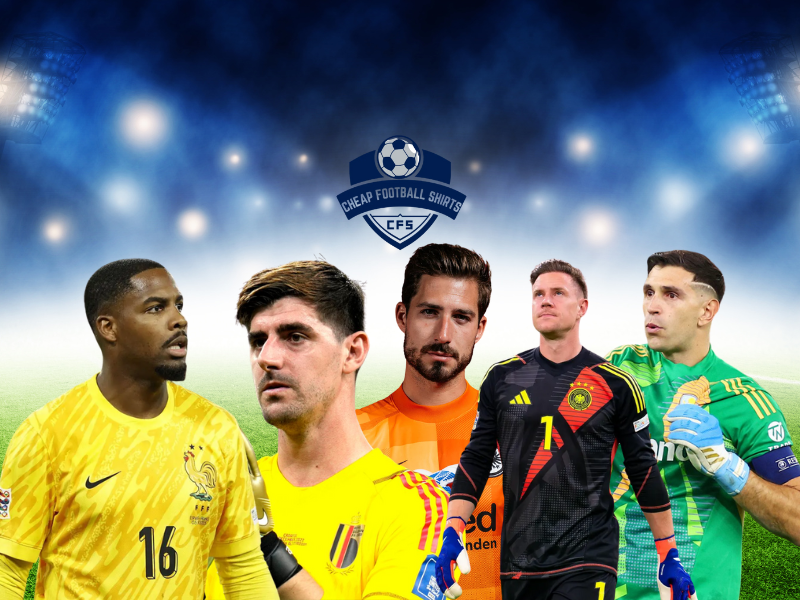Every football lover knows the sight: a sea of yellow and green, samba rhythms echoing in the stands, and the unmistakable swagger of the Brazilian national team chasing World Cup glory. The Brazilian World Cup jersey is not just a kit, it is a symbol of skill, style, and five star footballing heritage. Whether you are remembering that legendary 1970 design or tracking the latest shirt release, each generation of Seleção shirts carries unforgettable stories stitched right into its seams.
Here is a grounded, match day look into the origins and meaning behind each standout Brazil kit. We will cover celebrated designs, those key matches that made them famous, what sets each shirt apart for fans and collectors, and how they fit into the landscape of international football shirts.
Why the Brazilian World Cup Jersey Matters
From streets in Rio to terraces in London, the Brazil shirt has always captured backs and hearts around the world. It is a shirt that signals attacking football, flair, and joy. When Brazil step onto the world stage, the colours alone say everything: here comes the beautiful game, played with freedom and national pride.
Standout Brazilian World Cup Jerseys Through the Ages
Let’s walk through the most iconic Brazil World Cup shirts, focusing on what made each era special, the unforgettable matches, and why fans still cherish these designs.
Brazil 1970 – The Shirt That Made Football History
- Why it matters: Worn as Brazil dazzled the world in Mexico and lifted their third World Cup on 21 June 1970, this classic yellow shirt with green trim became synonymous with the very notion of attacking football.
- Achievements and defining matches: Pele’s perfect performance in the final against Italy is etched in history, with Brazil winning 4 to 1. That tournament where Carlos Alberto, Tostão, Jairzinho, and Rivelino starred—showcased football at its most exciting, with Brazil winning every single match.
- Cultural context: The 1970 shirt, first to feature shirt numbers, arrived as colour television began to shape football as entertainment. On the pitch, Brazil embodied joy, freedom, and teamwork. Off the pitch, the shirt started appearing in global streetwear and terrace photos, influencing kit tastes far beyond South America.
- Who will love it: Any supporter who connects football with pure, attacking play and appreciates history in design.
- Sizing and care tip: These 1970s styles often fit a bit boxy. Size accordingly and wash cold to preserve colours.
- Provenance snapshot: Made by Athleta, no sponsor, worn at Estadio Azteca, World Cup final, June 1970.
Explore more classic world shirts in our full international kits range on cheapfootballshirts.com.
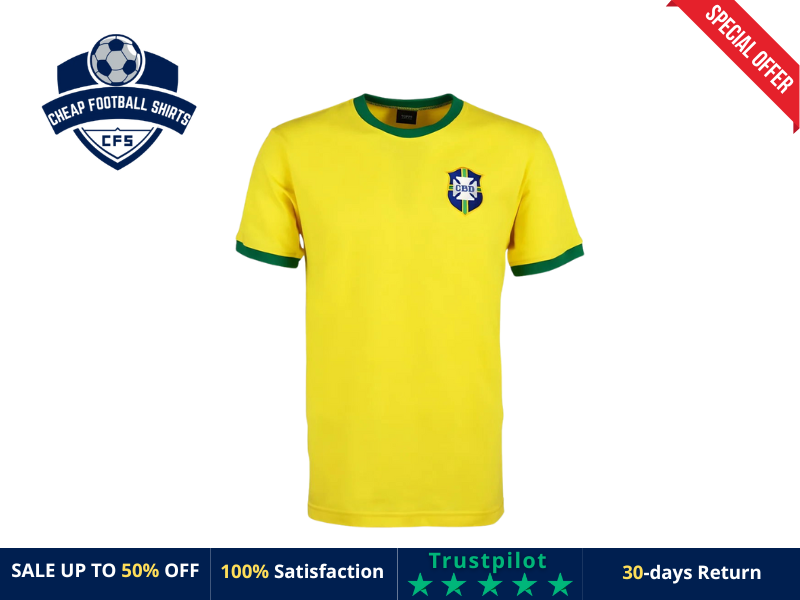
Brazil 1982 – Beauty and Heartbreak
- Why it matters: The 1982 Brazil side is widely considered the best team never to win the cup, led by Socrates, Falcão, and Zico.
- Achievements: Unbeaten in the group stage and remembered for the 3 to 1 masterclass over Argentina on 2 July. But heartbreak followed as they lost 3 to 2 to Italy, Paolo Rossi’s hat trick sealing an exit that shocked football.
- Cultural context: The shirt was tighter fitted with a sleeker look, made famous by Adidas boots and romanticised in football culture for its stylish failures. “Seleção 82” remains a definition of footballing artistry, referenced in music, magazines, and supporter stories.
- Who will love it: Fans who believe football is about more than results about passion, risk, and unforgettable play.
- Quick fit tip: 1980s kits tend to run smaller than modern shirts.
- Provenance snapshot: Manufactured by Topper, World Cup Spain 1982, most memorable moment versus Argentina.
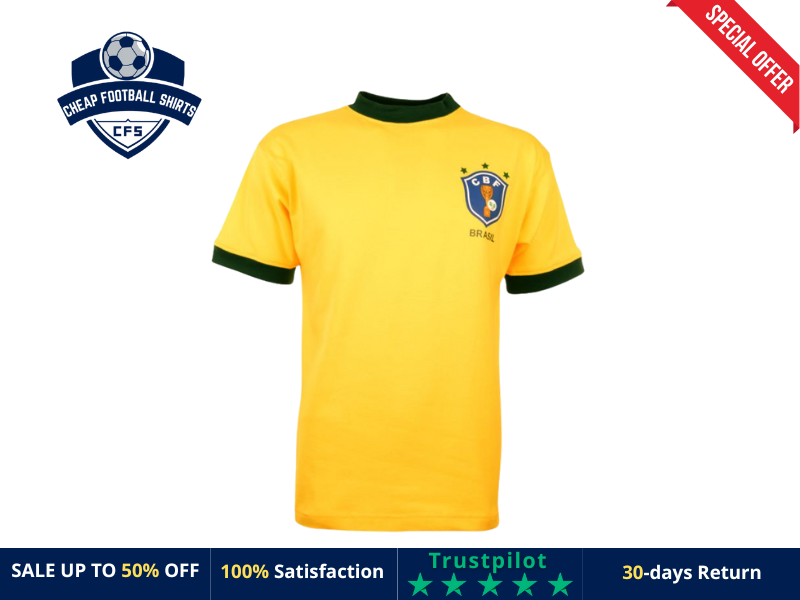
Brazil 1994 – The Return to Glory
- Why it matters: After a 24 year wait, Brazil lifted their fourth trophy in the USA. The shirt is memorable for those jagged geometric graphics and the sight of Romário, Bebeto, and Dunga guiding the team to glory.
- Achievements: The team defeated Italy on penalties on 17 July 1994 at the Rose Bowl, with Taffarel’s saves and Roberto Baggio’s wild miss writing history.
- Cultural context: The bold pattern fit perfectly in the nineties, a decade bursting with colourful shirts and loud terrace fashion. Streetwear fans revived the look in later years, making it a festival and football staple.
- Who will love it: Supporters who lived through the nineties or enjoy retro looks in today’s football fashion.
- Sizing note: Roomy shoulders, so might size down for a fitted street style.
- Provenance snapshot: Made by Umbro, wore no sponsor, World Cup 1994 final, Rose Bowl.
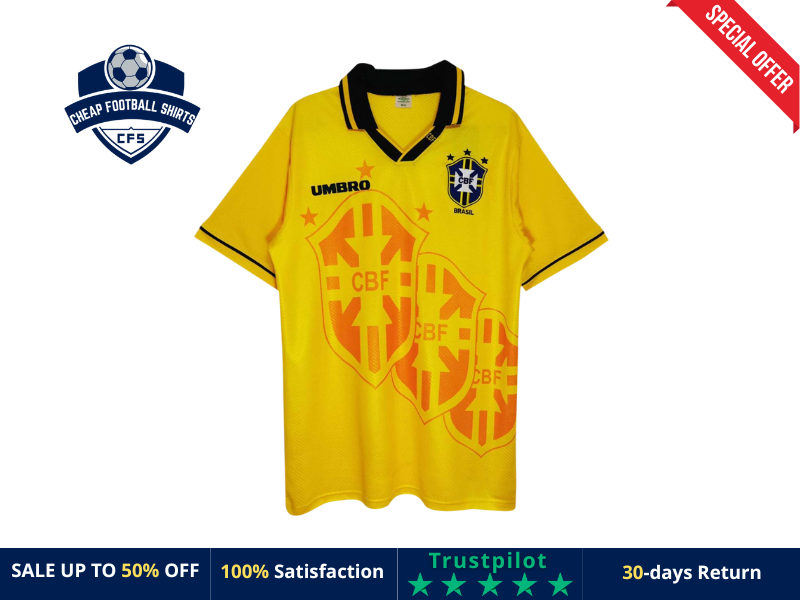
Brazil 2002 – A Modern Classic
- Why it matters: Rivaldo, Ronaldo, and Ronaldinho starred as Brazil claimed their fifth World Cup, becoming the first nation to reach that mark.
- Key moments: Ronaldo’s redemption was complete on 30 June 2002 in Yokohama as Brazil won 2 to 0 over Germany. The shirt’s swooping green details echoed the energy of the tournament co hosted by South Korea and Japan.
- Cultural impact: This shirt defined the birth of Brazil’s new generation of flair, street skills, and commercial global football. Posters and highlights from 2002 still appear in pubs, fan collections, and even videogame cover art.
- Who will love it: Newer supporters and anyone swept up by early 2000s football nostalgia.
- Care tip: Modern materials, so keep away from high heat when washing.
- Provenance snapshot: Nike, worn at International Stadium Yokohama, 2002 World Cup final.
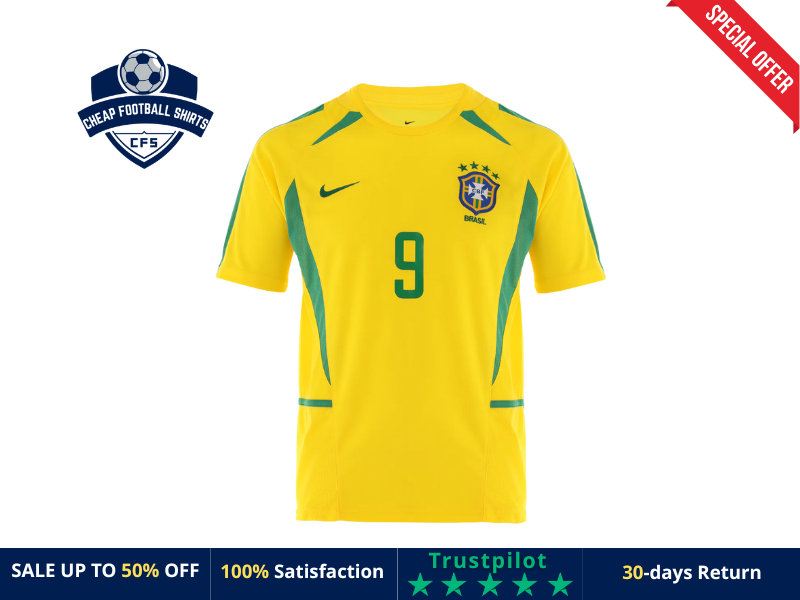
Brazil 2014 – Host Nation Heartbreak
- Why it matters: Brazil welcomed the world but left in tears after the 7 to 1 defeat to Germany, an unforgettable night in Belo Horizonte on 8 July 2014.
- Achievements and pain: The team’s journey to the semis included epic matches like the tense penalty win over Chile. Neymar’s performances and injury shaped national mood for years.
- Cultural perspective: The shirt’s simple yellow and green returned to classic looks, a nod to history, but became a symbol of dashed hopes. Even so, the 2014 kit carries emotional weight for supporters who lived the highs and lows on home soil.
- Who will love it: Fans who see football as a mirror of life: joy, suffering, hope, and undying support.
- Note on sizing: Modern slim fit. Check measurements if buying for casual wear.
- Provenance snapshot: Nike, worn at Estadio Mineirao, Belo Horizonte, World Cup semi final.
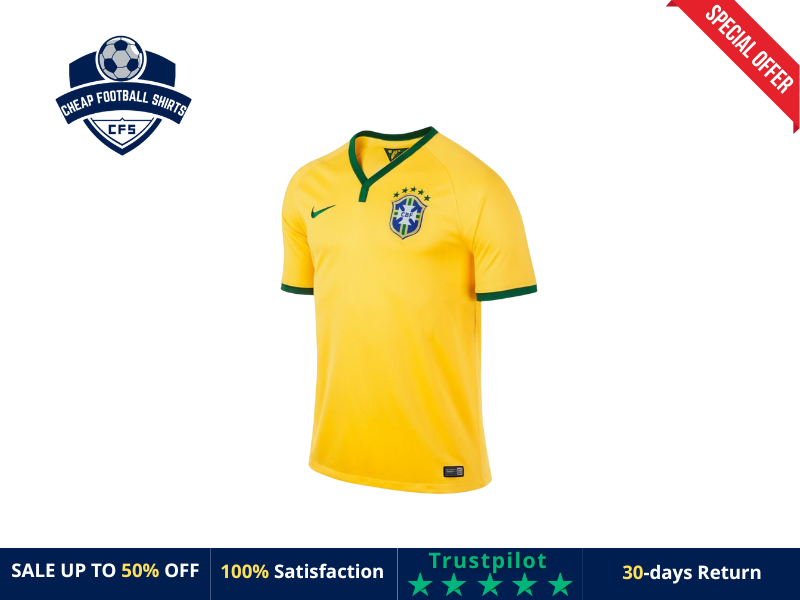
FAQs about the Brazilian World Cup Jersey
- What makes a Brazilian World Cup jersey iconic?
Typically it is tied to a tournament win or heartbreaking loss. Dozens of classic moments like Pele’s 1970 chip, or Ronaldo’s 2002 haircut anchor a design in supporter memory and wider culture. - How much does a classic Brazil shirt cost?
Prices range widely depending on era and condition. Rare 1994 or 1970 kits can fetch high sums on auction sites, but modern reissues and retro shirts offer an affordable route for most fans. - Are modern Brazil shirts cut differently than vintage ones?
Yes. 1970s and 1980s shirts often fit looser, while recent kits tend to be slimmer and more technical, echoing changes in both football and streetwear style. - Why does the Brazil shirt feature five stars?
Each star represents a World Cup title 1958, 1962, 1970, 1994, and 2002 marking Brazil’s unrivalled record in international football. - What is the UK market like for Brazil kits?
Supporters often pick up Brazil shirts ahead of tournaments or as fashion statements. Classic designs are especially popular with collectors and casual fans alike. - Check out our full Brazil shirts category on cheapfootballshirts.com for the latest releases and retro styles.
Conclusion
The Brazilian World Cup jersey is a living icon, stitched through decades of footballing triumph and heartbreak. Every thread connects supporters in London, São Paulo, and around the world to those dazzling moments when football was truly beautiful. If you want part of that magic – whether for memories, style, or pure love of the game – there has never been a better time to wear the yellow shirt and be part of something special.
For more Brazil classics and rare international kits, visit the Brazil shirts section on cheapfootballshirts.com.


